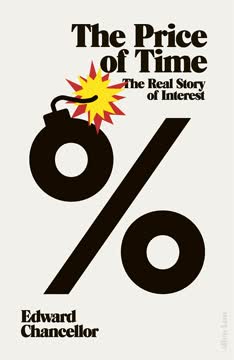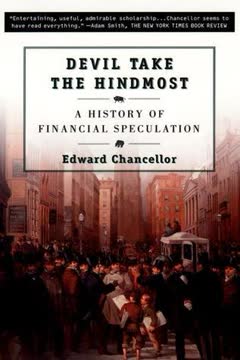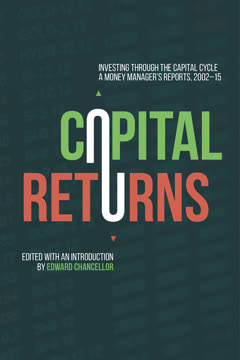Key Takeaways
1. The Ancient Roots of Interest as the "Price of Time."
In the beginning was the loan and the loan carried interest.
Ancient origins. Interest, the "price of time," predates coined money, with evidence from ancient Mesopotamia showing loans with interest before the invention of the wheel. Its etymology across Sumerian, Egyptian, Greek, and Latin languages links it to the "offspring" of livestock or fertility, suggesting its origin in productive loans like seeds or animals. This fundamental concept reflects that time itself has value in economic transactions.
Beyond mere exchange. While Aristotle and medieval scholars viewed money as solely for exchange, overlooking its store of value, the act of lending inherently involves time. Interest compensates the lender for the temporary deprivation of capital, reflecting the "lucrum cessans" or foregone profit. This recognition transformed the understanding of interest from a moral transgression to a legitimate economic function.
Human impatience. The concept of "time preference" explains why individuals value present consumption more than future consumption, a phenomenon demonstrated by the "Marshmallow Test." Interest acts as a reward for delaying gratification, incentivizing saving and investment. Without this incentive, capital would be hoarded, hindering economic activity and the valuation of long-lasting assets like property.
2. The Historical Struggle Against Usury and Its Economic Necessity.
Nothing is more amusing than the multitude of laws and canons made in every age on the subject of the interest of money, always by wiseacres who were hardly acquainted with Trade and always without effect.
Moral condemnation. From ancient Israel to medieval Europe, religious and philosophical traditions condemned "usury" – the charging of interest – as unjust exploitation of the needy. Figures like Aristotle and Thomas Aquinas argued that money was barren and could not naturally reproduce, making interest an "unnatural" gain. This moral stance often led to social ostracization for moneylenders.
Economic imperative. Despite moral and legal prohibitions, the practice of charging interest persisted and expanded, especially with the growth of trade and industry in the Middle Ages. Merchants and bankers found ways to circumvent bans, recognizing that credit was indispensable for commerce and that lenders required compensation for risk and opportunity cost. The sheer demand for capital ultimately rendered anti-usury laws futile.
Justice and value. The shift in understanding recognized interest as a fair reward for a mutual exchange of services, where the lender provides the use of capital over time. This perspective distinguished legitimate interest from exploitative usury, acknowledging that capital itself has a "productive character." As the modern era dawned, the idea that "time is money" became a cornerstone of capitalist thought, making interest an accepted and necessary component of economic life.
3. Early Warnings: Artificially Low Rates Breed Speculation and Misallocation.
If ill Husbandry has wasted our Riches, we cannot hope, simply by reducing the rate of interest, to raise them to their former value.
The Child-Locke debate. In 17th-century England, Sir Josiah Child advocated for lower interest rates, believing it would boost trade and land values, citing Dutch prosperity. John Locke, however, countered that artificially lowering rates would:
- Harm savers ("widows and orphans")
- Benefit bankers and indebted merchants
- Discourage lending and lead to hoarding
- Cause asset price inflation in London
- Fail to revive an economy lacking "industry and frugality"
Law's grand experiment. John Law's 18th-century "System" in France, involving a national bank issuing paper money and cutting interest rates to 2%, aimed to stimulate the economy and reduce national debt. This led to the infamous Mississippi Bubble, where:
- Massive money printing fueled speculative frenzy in company shares
- Asset valuations became detached from fundamentals
- The bubble's collapse caused widespread financial ruin and inflation
Lessons unheeded. Law's experiment, though disastrous, anticipated modern central banking policies of expanding money supply and lowering rates. Richard Cantillon, a contemporary, shrewdly observed that such policies could inflate financial assets before consumer prices, creating dangerous imbalances. These early episodes demonstrated that manipulating the "price of time" could lead to speculative manias and misallocation of capital, rather than genuine prosperity.
4. The 1920s Echo: Price Stability Masking a Credit-Fueled Bubble.
There is nothing so unstable as a stabilized price level.
The Fed's "whisky." In the 1920s, the US Federal Reserve, under Benjamin Strong, pursued a policy of price stability, believing it would ensure financial stability. Despite robust economic growth and soaring productivity, the Fed kept interest rates low, even cutting them in 1927 to aid European economies. Strong famously called this a "petit coup de whisky" for the stock market.
Hidden inflation. While consumer prices remained stable, the easy money policy fueled a massive credit boom and speculative excesses:
- Bank credit doubled, largely financing stock loans and real estate
- Property bubbles emerged across the nation
- Foreign lending surged, with US capital flowing to higher-yielding European bonds
- Stock prices reached "bubble valuations," discounting "even the hereafter"
Hayek's prescience. Austrian economist Friedrich Hayek criticized the Fed's price stabilization, arguing that in a productive economy, prices should naturally fall. By preventing this "good deflation," the Fed administered an "excessive stimulus" to the economy, leading to "malinvestment" and a "relative inflation" in asset prices. Hayek accurately predicted that the Roaring Twenties would end in a deflationary bust, a warning largely ignored by mainstream economists.
5. Post-2008: Ultra-Low Rates Fuel the "Everything Bubble."
By any measure, real long-term interest rates are much too low and therefore unsustainable.
Unprecedented asset inflation. Following the 2008 financial crisis, central banks globally slashed interest rates to historic lows and engaged in massive quantitative easing. This unprecedented monetary stimulus ignited an "Everything Bubble," inflating a vast array of assets simultaneously:
- Commodities: Industrial raw materials and precious metals soared.
- Real Estate: Property prices in major global cities reached extreme valuations.
- Stocks: US equities achieved record valuations, driven by "hyperbolic discounting" of future tech profits.
- Cryptocurrencies: Bitcoin and other digital assets experienced frenzied, volatile price surges.
The wealth illusion. This surge in asset prices created an illusion of wealth, with US household wealth nearly doubling by 2018. However, much of this was "virtual wealth," financial claims detached from productive capital. While asset owners enjoyed capital gains, these gains were often offset by lower future investment returns, particularly for bondholders. This "New World Wealth Machine" prioritized inflating asset values over genuine economic production.
Central bank complicity. Central bankers, particularly the Federal Reserve, explicitly aimed to boost asset prices to stimulate consumption and confidence. This policy, however, led to a disconnect between finance and the real economy, where:
- Profits became increasingly detached from real economic activities
- The financial sector crowded out productive industries
- The "bubble economy" fostered unsustainable growth based on inflated asset values, rather than fundamental improvements.
6. Unnatural Selection: How Low Rates Create "Zombie" Firms and Stifle Productivity.
It will purge the rottenness out of the system. High costs of living and high living will come down … enterprising people will pick up the wrecks from less competent people.
Creative destruction halted. Joseph Schumpeter's concept of "creative destruction" posits that capitalism thrives through the continuous destruction of old, inefficient businesses and the creation of new, more efficient ones. Interest rates act as a "brake" or "governor," guiding this natural selection process. However, ultra-low interest rates after 2008 effectively stalled this vital economic cleansing.
The rise of "zombies." Easy money kept unprofitable, over-indebted "zombie" companies alive, particularly in Europe and Japan, by allowing them to service debt without generating sufficient profits. This "unnatural selection" led to:
- Overcapacity: Industries plagued by excess production
- Misallocation of capital: Resources trapped in low-productivity firms
- Reduced dynamism: Hindered new business formation and innovation
- Stifled productivity: Overall economic efficiency declined, contributing to "secular stagnation."
The productivity puzzle. The post-crisis decade saw a collapse in productivity growth across developed economies, a "conundrum" for policymakers. This decline was linked to the zombie phenomenon, as inefficient firms absorbed capital and labor, discouraging investment in more productive ventures. Claudio Borio of the BIS argued for an "interest rate–productivity nexus," where low rates directly contribute to low investment and falling productivity, creating a vicious cycle.
7. The Promoter's Profit: Financialization Crowds Out Productive Investment.
Financial capital, once cut loose from its original role as a modest helper of a real economy of production to meet human needs, inevitably becomes speculative capital geared solely to its own self-expansion.
The "promoter's profit." Historically, periods of low interest rates have enabled financiers to reap vast "promoter's profits" by consolidating industries, leveraging companies, and manipulating stock prices. This was evident in the US "robber baron" era, where figures like J. Pierpont Morgan amassed fortunes through trust formation and stock manipulation, often at the expense of productive investment.
Shareholder value's dark side. The post-2008 era saw a resurgence of this phenomenon under the guise of "shareholder value" maximization. Executives, incentivized by equity-linked compensation, used cheap debt to fund massive share buybacks rather than investing in long-term growth or R&D. This financial engineering artificially boosted earnings per share and stock valuations, enriching management and short-term investors.
The finance curse. This "financialization" of the economy, where financial operations within firms account for an increasing share of profits, led to:
- Corporate monopolies: A wave of debt-fueled mergers reduced market competition.
- Private equity boom: Buyout firms used cheap leverage to acquire and "flip" companies, often cutting long-term investment.
- Resource misallocation: Credit flowed to collateral-rich sectors like real estate, starving manufacturing and R&D.
- Weakened real economy: The financial sector crowded out productive activities, leading to slower economic growth and increased systemic risk.
8. The Erosion of Savings and the Looming Pension Crisis.
If such a practice became general, it would have quite a disastrous effect.
Repressing savers. Ultra-low interest rates fundamentally altered the incentive to save. Interest, traditionally the "wage of abstinence" or reward for delaying consumption, became negligible or even negative. This "financial repression" meant:
- Lost income: Depositors, particularly the less well-off, lost billions in interest income annually.
- Reduced savings rates: Households, especially in the US and UK, saved less, bringing future consumption forward.
- Consumption of capital: Faced with meager returns, retirees were forced to consume their principal to maintain living standards, a practice Gustav Cassel warned would be "disastrous."
The pension time bomb. The collapse in interest rates created a severe pension crisis by dramatically increasing the present value of future liabilities for "defined benefit" plans. Pension funds, committed to guaranteed incomes, found their assets insufficient to meet obligations, leading to:
- Massive deficits: Public and corporate pension shortfalls reached trillions of dollars.
- Benefit cuts: Some plans were forced to reduce promised payouts, sparking social unrest.
- Riskier investments: Pension providers, desperate for yield, took on greater risks or leveraged their portfolios.
The "paradox of policy." While low rates aimed to stimulate short-term demand, they undermined long-term financial stability by discouraging savings and investment. This created a "bull market in liabilities" and a "wealth illusion" that masked the growing insecurity for future retirees. The tragic consequence was a generation facing the prospect of outliving their savings, with some even facing "deaths of despair."
9. Let Them Eat Credit: How Low Rates Exacerbate Inequality.
For whosoever hath, to him shall be given, and he shall have more abundance: but whosoever hath not, from him shall be taken away even that he hath.
The rich get richer. Ultra-low interest rates, particularly after 2008, dramatically exacerbated wealth and income inequality. The "Everything Bubble" disproportionately benefited the wealthy, who own a larger share of financial assets:
- Asset owners: Enjoyed massive capital gains in stocks, bonds, and real estate.
- Financial elite: Hedge fund managers, private equity barons, and senior executives saw their fortunes soar through cheap leverage and stock-based compensation.
- "Promoter's profit": Wall Street extracted immense wealth from financial engineering and mergers.
The 99% struggle. Meanwhile, the majority of the population faced stagnant wages, unaffordable housing, and evaporating returns on their modest savings. This created a "bad inequality" rooted in corporate rent-seeking and financial manipulation, rather than productive contribution. Policymakers' response to stagnant incomes was effectively "let them eat credit," encouraging low-income households to take on more debt to maintain consumption.
A rigged system. The stark contrast between Wall Street's gains and Main Street's struggles fueled resentment and the perception of a "rigged system." While banks received zero-cost loans from the Fed, ordinary citizens paid high interest rates on credit cards and subprime loans. This widening gap, where "wealth was sucked upwards," pushed societies towards a "neo-feudalism" and increased the risk of social and political instability.
10. The Price of Anxiety: Mispricing Risk in a Zero-Rate World.
Keeping someone in anxiety is pain, hence it must be paid for.
Interest as insurance. Ferdinando Galiani, an 18th-century economist, argued that interest is fundamentally the "price of anxiety," compensating lenders for the risk of loss. In a healthy financial system, interest rates accurately price various risks: credit, liquidity, inflation, and duration. However, ultra-low interest rates distort this crucial function, leading to a systemic mispricing of risk.
The "carry trade" monster. When short-term rates are low, investors are incentivized to borrow cheaply and buy higher-yielding, riskier assets – the "carry trade." This strategy offers small, steady gains but exposes investors to sudden, large losses ("picking up nickels in front of steamrollers"). After 2008, zero rates revived this dangerous regime, leading to:
- Yield-chasing: Investors flocked to illiquid securities, junk bonds, and leveraged loans.
- Deteriorating standards: "Covenant-lite" loans and complex securitizations proliferated.
- Duration risk: Investors took on longer-dated bonds, exposing them to massive losses if rates rose.
Volatility suppression. Central bank interventions, particularly quantitative easing, actively suppressed market volatility, creating a false sense of security. This encouraged "shorting vol" strategies and increased leverage, as investors believed the "Greenspan put" (or "Fed put") would protect them from downturns. However, this stability was inherently destabilizing, as Hyman Minsky argued, leading to a build-up of hidden risks that eventually erupted in events like "Volmageddon."
11. Global Monetary Plague: The Dollar Standard's Impact on Emerging Markets.
The dollar is our currency but your problem.
Excess elasticity. The US dollar's role as the global reserve currency, especially after the collapse of Bretton Woods, grants the United States "exorbitant privilege" to run deficits without immediate consequence. This "excess elasticity" of the Dollar Standard allows US interest rates to be set without regard for international capital flows, effectively unleashing a "global monetary plague" when rates are low.
The carry trade abroad. When the Federal Reserve implements easy money policies, it drives international carry trades. Investors borrow cheap dollars and invest in higher-yielding assets abroad, particularly in emerging markets. This influx of "hot money" leads to:
- Currency appreciation: Emerging market currencies strengthen, hurting exports.
- Credit booms: Domestic credit expands rapidly, often fueling real estate bubbles and unsustainable investment.
- Debt accumulation: Foreign-currency denominated debt soars, making these economies vulnerable to dollar appreciation.
Taper tantrums and crises. The vulnerability of emerging markets to US monetary policy became starkly evident during the "taper tantrum" of 2013, when the Fed merely signaled a reduction in asset purchases. This caused:
- Capital flight: Funds rapidly exited emerging markets.
- Currency collapses: Local currencies plummeted against the dollar.
- Debt crises: Countries like Brazil and Turkey faced severe economic downturns and corruption scandals, as their dollar-denominated debts became unmanageable.
12. Financial Repression with Chinese Characteristics: State Control and Debt.
[T]he biggest problem with China’s economy is that the growth is unstable, unbalanced, uncoordinated and unsustainable.
State-led repression. China's economic miracle, while fueled by financial deepening, was also characterized by "financial repression." The state maintained tight control over money and interest rates, directing cheap credit to favored entities. This involved:
- Capital controls: Trapping domestic savings within the country.
- Subsidized lending: State-owned banks provided low-cost loans to state-owned enterprises and infrastructure projects.
- Repressed savers: Deposit rates were kept below inflation and economic growth, effectively taxing households to subsidize borrowers.
Unbalanced growth. This system led to profound imbalances, as Premier Wen Jiabao noted in 2007. Cheap credit fueled an unprecedented investment boom, particularly in real estate and infrastructure, but often resulted in:
- Overcapacity: Industries like steel and cement suffered chronic oversupply.
- Misallocation of capital: Resources were directed to unproductive "zombie" projects and "ghost cities."
- Corruption: The allocation of cheap credit created vast opportunities for rent-seeking and illicit wealth accumulation among Party cadres.
Unsustainable debt. The post-2008 stimulus, financed by massive credit expansion, pushed China's "Great Wall of Debt" to unsustainable levels. This debt, often concealed through "shell games" and "Ponzi finance," led to:
- Declining efficiency: Each unit of new credit generated diminishing returns in GDP growth.
- Deflationary pressures: Overcapacity and zombies contributed to falling producer prices.
- Capital flight: Despite controls, savings sought higher returns abroad, threatening currency stability. Beijing's attempts to manage these imbalances through further interventions only deepened the country's reliance on state control, hindering genuine market reforms.
Last updated:
Review Summary
The Price of Time is a thought-provoking book on the history and impact of interest rates. Readers praise Chancellor's insightful analysis of how artificially low rates distort economies and fuel speculative bubbles. The book offers a comprehensive look at interest rates through history, from ancient civilizations to modern central banking. While some found parts repetitive or dense, most reviewers appreciated the book's relevance to current economic issues. Critics noted a focus on Western economies and occasional inconsistencies in argumentation.
Similar Books
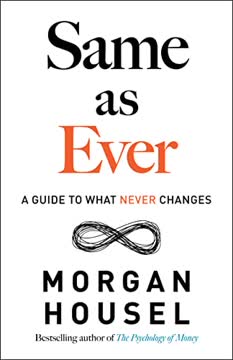
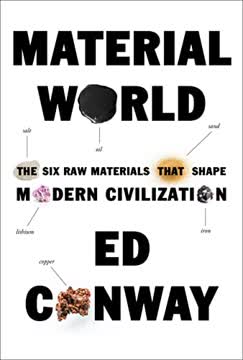
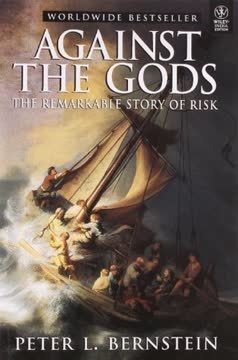
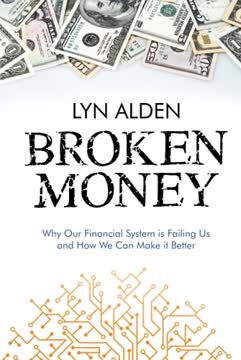
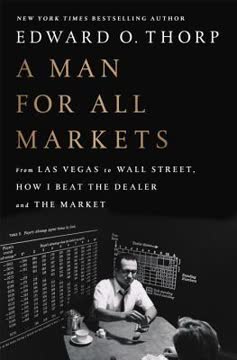
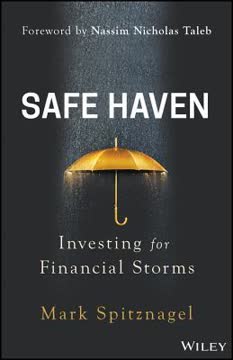
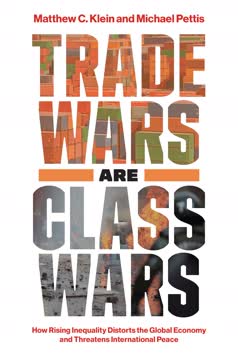
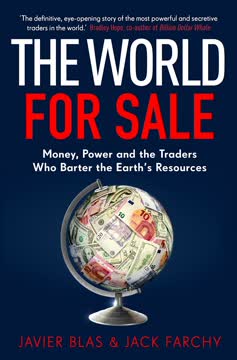
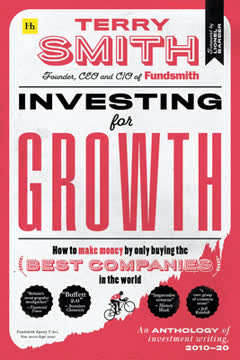
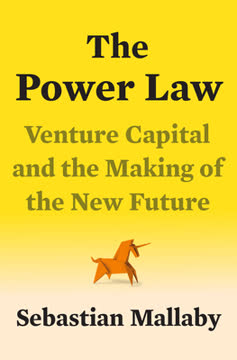
Download PDF
Download EPUB
.epub digital book format is ideal for reading ebooks on phones, tablets, and e-readers.
